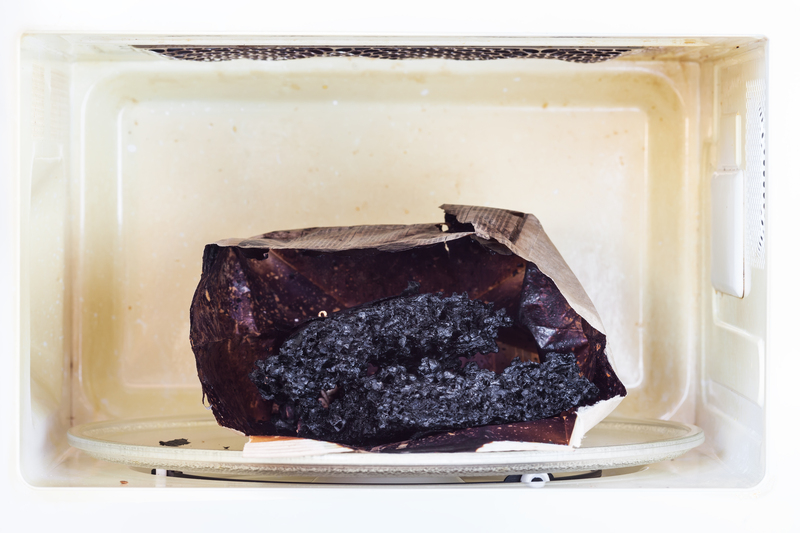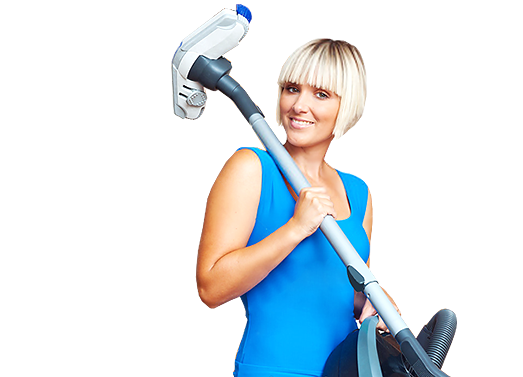Essential Strategies for a Dust-Free, Allergen-Free Home
Posted on 04/07/2025
Maintaining a dust-free, allergen-free home is vital for anyone struggling with allergies, asthma, or a desire for improved indoor air quality. Everyday dust and allergens not only impact the cleanliness of your environment but also have a significant effect on health and well-being. In this comprehensive guide, discover essential strategies, practical tips, and transformative solutions to reduce dust and allergens -- creating a healthier, happier home for you and your loved ones.
Understanding Household Dust and Indoor Allergens
Dust is more than just visible dirt; it's a complex mixture of fabric fibers, skin cells, pollen, pet dander, mold spores, and even dust mites. Allergens are substances that trigger allergic reactions, commonly including pet hair, dust mite waste, mold, and pollen. Thus, a dust-free household requires more than just surface cleaning--it demands a strategic, whole-home approach to prevent respiratory issues, allergies, and other health problems.
Why Is an Allergen-Free Environment Important?
- Reduces allergic reactions: Sneezing, runny nose, skin rashes, and respiratory symptoms can be lessened.
- Improves sleep quality: Fewer allergens mean better breathing and more restful sleep.
- Protects children and pets: Vulnerable family members benefit the most from cleaner air.
- Prevents asthma attacks: Asthma is closely linked to indoor allergens, making control critical.

Comprehensive Dust Control Strategies for Every Room
*Achieving a dust and allergen-free home requires a multifaceted approach*. Below are room-by-room tips designed to elevate your efforts. For each area, using variations of dust and allergen control is key.
Living Room: Heart of the Home
- Vacuum weekly with a HEPA filter: Regularly removing dust from floors and furniture reduces buildup.
- Minimize textiles: Choose leather or tightly woven fabrics over plush upholstery, which trap less dust.
- Wash curtains and cushion covers: Launder regularly in hot water to kill dust mites.
- Dust with microfiber cloths: These trap and hold dust, unlike dry dusters that spread particles.
- Keep clutter to a minimum: Fewer items mean fewer places for dust to settle.
Bedrooms: Allergen-Free Sleeping Zones
- Encase mattresses and pillows: Use allergen-proof covers to block dust mites and dander.
- Change and wash bedding weekly: Hot water (at least 130?F/54?C) kills dust mites and removes pollen.
- Replace carpets with hard flooring: Wood, tile, or laminate is easier to keep dust-free.
- Limit stuffed animals and extra pillows: These can harbor dust and mites; wash regularly or keep to a minimum.
- Use an air purifier: Especially with HEPA filters, air purifiers trap airborne particles, providing a cleaner sleep environment.
Kitchen: Control Dampness and Hidden Dust
- Use a vented range hood: It helps to remove cooking particles that become dust.
- Clean behind appliances: Dust and crumbs accumulate under and behind the fridge, oven, and dishwasher.
- Store food in airtight containers: Prevents attracting pests and limits mold spores.
- Empty garbage regularly: Avoids mold and allergen buildup.
- Check for leaks: Dampness encourages mold, which is a major household allergen.
Bathrooms: Prevent Mold and Moisture Allergens
- Run an exhaust fan: After showers or baths, this reduces humidity and inhibits mold growth.
- Clean tiles and grout weekly: Kills mold or mildew and removes soap scum (another dust magnet).
- Use a squeegee on shower walls: Minimize water spots where mold can develop.
- Wash bath rugs and towels regularly: Damp fabric holds bacteria and allergens.
- Replace shower curtains if moldy: Or wash regularly in hot water.
Entryways and Hallways: Trap Dust Before It Spreads
- Use large doormats: Capture dust and pollen at the door.
- Implement a no-shoes policy indoors: Shoes bring in dust, pollen, and chemicals from outside.
- Vacuum or sweep frequently: Don't let dirt travel further into your home.
- Organize outerwear: Store coats, hats, and scarves to minimize dust transfer from outdoor clothing.
Advanced Tactics for a Dust-Free, Allergen-Proof Home
To truly eliminate allergens and achieve a dust-free home environment, it's important to implement advanced strategies alongside daily cleaning habits.
Air Filtration and Purification
- Upgrade HVAC filters: Use HEPA or high-MERV filters for your central air system.
- Change filters regularly: Follow manufacturer instructions--usually every 1-3 months.
- Add portable air purifiers: HEPA-equipped air cleaners help reduce dust, pollen, and pet dander, especially in bedrooms and living rooms.
- Keep air vents and ducts clean: Schedule professional duct cleaning every few years.
Humidity and Moisture Control
- Keep indoor humidity between 30-50%: Low humidity discourages dust mites and mold; invest in a hygrometer for monitoring.
- Use dehumidifiers where necessary: Basements and bathrooms are high-moisture hotspots.
- Repair leaks promptly: Addressing water leaks eliminates a primary source of mold allergens.
Clutter-Busting and Smart Organization
- Declutter regularly: The fewer items on surfaces, the less you need to dust.
- Use closed storage: Cabinets, drawers, and storage bins keep items dust-free.
- Organize closets: Clothing and shoes can release dust; use garment bags for off-season wear.
Green Cleaning: Choose Products Wisely
- Avoid harsh chemicals: Many commercial cleaners can be respiratory irritants.
- Opt for unscented, non-toxic options: Baking soda, white vinegar, and natural soaps clean without contributing to indoor air pollution.
- Use damp-dusting techniques: Slightly moistened cloths trap and remove dust instead of scattering it.
Special Considerations: Pets, Plants, and Pollen
Managing Pet Dander
- Bathe and groom pets regularly: Brush outdoors if possible to minimize indoor dander.
- Keep pets out of bedrooms: Especially important if you suffer from allergies.
- Vacuum pet beds and play areas: Choose washable pet bedding and clean often.
Houseplants: Friend or Foe?
- Select allergy-friendly plants: Some plants clean the air, but others can foster mold or pollen. Avoid high-pollen varieties indoors.
- Don't overwater: Moist soil is a breeding ground for mold and mildew.
- Wipe large leaves: Dust houseplant leaves with a damp cloth regularly to keep them healthy and dust-free.
Protecting Against Pollen
- Keep windows closed during high pollen seasons: Use air conditioning instead of window ventilation.
- Change clothes and shower after spending time outdoors: Pollen clings to clothing, hair, and skin.
- Clean window screens and sills: Pollen quickly accumulates here; clean them weekly during allergy season.
Deep Cleaning Routines for an Allergen-Free Home
A regular deep-cleaning schedule is essential for keeping your home's allergen and dust levels under control. Here is a suggested routine you can adapt for your needs:
- Monthly:
- Vacuum under furniture and in hidden corners
- Launder curtains
- Clean ceiling fans and light fixtures
- Wipe baseboards and molding
- Seasonally:
- Wash windows and screens
- Steam-clean upholstery and carpets
- Empty and clean closets
- Clean behind major appliances
- Annually:
- Have HVAC ducts professionally cleaned
- Check and replace weather stripping
- Inspect for mold in basements and attics
- Audit storage and donate unused items
Smart Lifestyle Choices for Better Air Quality
Beyond cleaning, some lifestyle modifications help maintain a low-allergen, dust-free home:
- No smoking indoors: Tobacco smoke aggravates allergies and dust issues.
- Vent appliances: Ensure gas stoves, dryers, and heaters vent outside.
- Restrict burning candles and incense: These produce soot and fine particles that contribute to dust and respiratory irritation.
- Limit use of textiles and heavy drapes: Stick with lighter, washable window coverings and rugs.

Creating Habits for a Dust-Free, Allergen-Free Lifestyle
A truly dust-free, allergen-free environment is not a one-time project, but a commitment to ongoing, mindful habits. By following these essential strategies and making informed choices, you can dramatically improve the air quality and overall health of everyone in your home.
- Establish a cleaning schedule: Regular tasks are more manageable than letting dust and allergens accumulate.
- Stay informed: Monitor pollen levels, new cleaning technologies, and allergy advice from reliable sources.
- Listen to your body: If you notice symptoms, adjust your routines or seek help from an allergy specialist.
Conclusion: Embrace a Clean, Healthy Home
Living in a dust-free, allergen-free home is achievable with a combination of smart cleaning, efficient air filtration, moisture control, and organized living. By integrating the strategies outlined here, you will reduce allergen exposure, limit dust accumulation, and ensure a healthier environment for your family and guests. Take the first step today, and enjoy the benefits of fresh, clean air every day!
Ready to transform your space? Start adopting these essential practices and experience a profound improvement in indoor air quality and comfort. Your journey to a cleaner, healthier home begins now!




